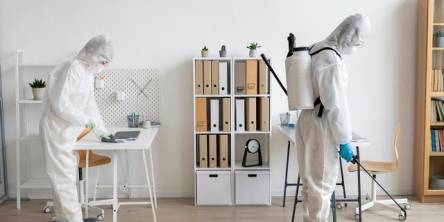Moving House Guide: Tips to Move Plants to your New House

Isn’t it such a wonderful feeling to move to a new house with all your plants with you? While it seems a welcoming experience, moving plants isn’t exactly as simple as it sounds. You have to think ahead, make some plans and spend time in prepping your plants from before to transport it in time during the move.
Here is a simple guide about moving plants when moving house.
Build a ‘Moving Plants’ Plan!
Having a sound plan is the basis for a successful move and it is the same for moving garden too. First of all, you must take stock of the garden space you have at your new place and see if all the plants you have can fit into it. If yes, then you can start considering other factors like soil type, moisture, wind, the direction of sun rays and other additional factors.
If the house you are moving in has less garden space, then there is no point in taking the pain to pack all your plants carefully. You can give out the plants to your friends and neighbour before you leave as a thank you gift for helping you with the move, or you can try to sell the plants too.
Check for Its Transportation
In some states, it's not allowed to move with certain plants. Therefore, make sure to inquire beforehand about all these limits and get it cleared.
Another important detail that many fail to check is with the moving company. There are a few moving companies which do not move plants along with the other items. This can be because of the long hours the plants will be placed inside dark trucks without water or sunlight leading to withering. It is better to check with the removals while hiring and confirm that they are open to moving plants too.
Preparing the Plants for the Move
It is a fact that plants do not like to be ‘moved’ and it is up to you to make the relocation smooth on them. If you fail to take precautions, the plants may die during the relocation.
First of all, if you have planted the plants on the soil instead of pots, transfer them to the pots a few days before the move. Make the soil wet so that you can easily uproot the plants. Dig as deep down as possible to ensure that you aren’t cutting any of the roots. Layer the pot thoroughly with manure and fertilizers and transfer the plant to the pot.
Place them in proper sunlight, give them sufficient water and food to get them adjusted to the pots. You can trim the plants before the move so that the protruding branches do not get damaged in the move. As you near the day of the move, try to keep the pots in dry and sheltered locations to get the plants accustomed to such environment.
Packing the Plants
If you have plants that are large and cannot be accommodated in pots, you can use large containers to keep two to three plants side by side. Make sure to check the pots and the containers for any holes or cracks and keep the plants all hydrated throughout.
Tie any long branches to ensure that it doesn’t interfere during the relocation. You can also use modular containers if possible as it would make the relocation of plants more simple. You can take off individual pieces of the modular container to keep a plant and reassemble it back together. You can also add compost in these modular containers and this makes it perfect for moving a large number of plants efficiently.
In the worst case that the plant is too big to relocate or when you do not have space in the truck to load a few points, try the techniques of cutting. You can cut a branch of the plant in a certain angle and carry it to your new home in a protected environment and plan it back in the pot to grow a brand new plant.
Prepping Just Before the Move
Just on the day when you are moving plants, it is essential to take some steps to keep it healthy throughout the relocation. Water the plants just as you are moving them into the trucks and let them get some fresh air and sunlight before you load. You can add some compost on the day of the move to ensure that the plants have sufficient nutrients to survive the move.
Give adequate space in between the plants while loading them into the trucks. While you are loading plants and boxes together, make sure that the boxes you line vertically do not accidentally fall on any of the pots or plants during the move. Arrange the boxes in such a way that there is some space between the stack of boxes and the plants.
Hire Understanding Removals Company
As we previously mentioned, some removal services do not relocate plants. Even those who do should be helpful and understanding to take proper care of the plants while loading and unloading.
When you have much work to do while moving house, relocating the plants will be an additional work that takes a significant amount of time. Instead of taking the entire responsibility of moving house on your own, it is best to take the help of reliable removalists who can help you with packing your stuff at home while you can take care of your dear plants.
Similar Articles
Upgrading your closet is truly rewarding. It seems to be an accomplishment, almost as if you had won a prize. The beauty of custom closets is that you can design them in any manner you desire. You get to select the elements that truly make it your own.
The idea of a home that runs itself used to belong in science fiction. But now, it’s a reality. No one speaks in robotic voices or asks their home to execute tasks. Instead, smart home automation systems quietly work in the background
It's a tale as old as time: You're relaxing at home, enjoying peace, when you notice a trail of ants marching across your kitchen counter. Or maybe a faint scratching noise in the ceiling gives you pause.
Maintaining a clean and organized workspace is crucial for creating a healthy and productive environment. Commercial cleaning strategy is very essential or important for facility management, improving employee well-being, boosting customer satisfaction, and ensuring regulatory compliance
Choosing the right tiles can make all the difference in home renovation or construction projects.
We’ve all been there—walking into a room only to trip over shoes, sift through piles of papers for that one important document, or struggle to find counter space in a kitchen full of clutter. It starts slowly: a few misplaced items here and there.
Imagine stepping through your front door after a long day in the cold. Suddenly, you’re wrapped in the soft glow of warm lighting, greeted by a plush rug under your feet, and surrounded by a room that feels uniquely yours
A small backyard doesn’t mean you have to sacrifice having a pool. In fact, with the right design, you can create a stunning, resort-like retreat that fits perfectly into your space
Buying composite decking boards online can be a great way to find competitive prices and convenient delivery options, but navigating the sea of deals and offers can be tricky.









